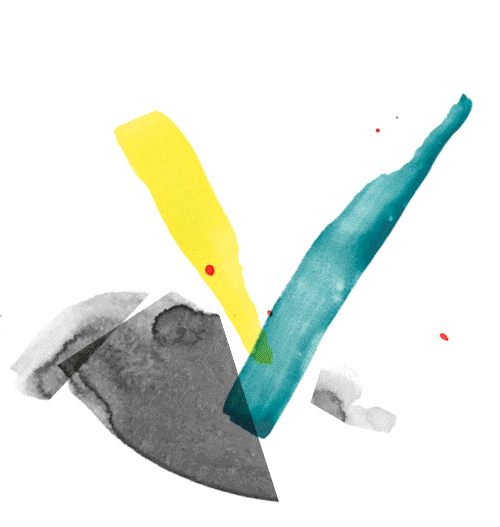

Sign up for our newsletters. You can change the settings or unsubscribe at any time.
Thank you for your subscription. We have sent you an e-mail with a confirmation link.


exp. 1
exp. 2
exp. 3

Cian Dayrit
Venue: Gropius Bau
Cian Dayrit
Born 1989 in Manila, PH – lives and works in Rizal, PH
“What makes a Filipino soldier? Who do they really serve?” These are questions artist Cian Dayrit poses in his counter-mapping practices and textile work, which explore the genealogy of militarization in the Philippines. Dayrit threads critical annotations and talismanic diagrams, tapping into the spiritual and revolutionary imagery of the anting-anting, a kind of Filipino folk amulet, while exposing the imperial legacy of the “white savior” and the martial tactics used to turn native soldiers against their own people.
In Anatomy of Aggression I and II (2020), Dayrit embroiders photographs taken by a US soldier in the early 1900s, a testimony of the US military infiltration into the Cordillera region that had been a stronghold of resistance during Spanish colonial rule. The US policy of “benevolent assimilation,” which brought in teachers and canned food together with military bases, prepared the ground for US tutelage, which lasted until 1946 but still shapes the current regime. The work traces the chain of command through a woven network, from the paramilitary and foot soldiers to the generals of the armed forces and their commander-in-chief, the president himself. It also shows their ties to US and Chinese imperial powers through corporate interests, and their complex interweaving with the country’s anti-terror and land-grabbing tactics, as well as with the business and landowning elites.
The large piece Tropical Terror Tapestry (2020) consists of a dense infographic quilted map that includes the current regime’s military enclaves and a topological overview of different counterinsurgency programs—technologies of state terrorism presently being waged against the “internal enemy,” the Filipino people. Embroidered side-panels depict diverse methods of militarism being used in these campaigns, as well as military camps, red-tagging of activists, forced displacement, and air raids against peasant and Indigenous communities—operations that have intensified during the Covid-19 crisis. For Dayrit, such topographical threadings are tools in themselves, anting-anting weapons of everyday artistry for self-education and resistance.
María Berríos
O Bailado do Deus Morto
Flávio de Carvalho
Play
Flávio de Carvalho: Fazenda Capuava
Archive of Lisette Lagnado
Photographs
Undocumented Rumours and Disappearing Acts from Chile
María Berríos
Essay
Being in Crisis together – Einander in Krisen begegnen
Feminist Health Care Research Group (Inga Zimprich/Julia Bonn)
Online workshop
#fight4rojava
Graffiti
IV: How Fear Can Dismantle a Body. Vis-a-Vis with two of four curators of the 11th Berlin Biennale
María Berríos, Lisette Lagnado
Conversation
By using this website you agree to the use of cookies in accordance with our data privacy policy.

Cian Dayrit
Venue: Gropius Bau
Cian Dayrit
Born 1989 in Manila, PH – lives and works in Rizal, PH
“What makes a Filipino soldier? Who do they really serve?” These are questions artist Cian Dayrit poses in his counter-mapping practices and textile work, which explore the genealogy of militarization in the Philippines. Dayrit threads critical annotations and talismanic diagrams, tapping into the spiritual and revolutionary imagery of the anting-anting, a kind of Filipino folk amulet, while exposing the imperial legacy of the “white savior” and the martial tactics used to turn native soldiers against their own people.
In Anatomy of Aggression I and II (2020), Dayrit embroiders photographs taken by a US soldier in the early 1900s, a testimony of the US military infiltration into the Cordillera region that had been a stronghold of resistance during Spanish colonial rule. The US policy of “benevolent assimilation,” which brought in teachers and canned food together with military bases, prepared the ground for US tutelage, which lasted until 1946 but still shapes the current regime. The work traces the chain of command through a woven network, from the paramilitary and foot soldiers to the generals of the armed forces and their commander-in-chief, the president himself. It also shows their ties to US and Chinese imperial powers through corporate interests, and their complex interweaving with the country’s anti-terror and land-grabbing tactics, as well as with the business and landowning elites.
The large piece Tropical Terror Tapestry (2020) consists of a dense infographic quilted map that includes the current regime’s military enclaves and a topological overview of different counterinsurgency programs—technologies of state terrorism presently being waged against the “internal enemy,” the Filipino people. Embroidered side-panels depict diverse methods of militarism being used in these campaigns, as well as military camps, red-tagging of activists, forced displacement, and air raids against peasant and Indigenous communities—operations that have intensified during the Covid-19 crisis. For Dayrit, such topographical threadings are tools in themselves, anting-anting weapons of everyday artistry for self-education and resistance.
María Berríos
Flávio de Carvalho: Fazenda Capuava
Archive of Lisette Lagnado
Photographs
Struggle as Culture: The Museum of Solidarity, 1971–73
María Berríos
Essay
III: La familia son quiénes se alegran con nuestros actos diarios. Detrás de las curadoras de la XI
María Berríos, Agustín Pérez Rubio
Conversation
Feminist Health Care Research Group
Web archive
Solidarity and Storytelling. Rumors against Enclosure
María Berríos
Essay
Fragments of the Artist’s Diary, Berlin 11.2019–1.2020
Virginia de Medeiros
Diary
By using this website you agree to the use of cookies in accordance with our data privacy policy.

Cian Dayrit
Venue: Gropius Bau
Cian Dayrit
Born 1989 in Manila, PH – lives and works in Rizal, PH
“What makes a Filipino soldier? Who do they really serve?” These are questions artist Cian Dayrit poses in his counter-mapping practices and textile work, which explore the genealogy of militarization in the Philippines. Dayrit threads critical annotations and talismanic diagrams, tapping into the spiritual and revolutionary imagery of the anting-anting, a kind of Filipino folk amulet, while exposing the imperial legacy of the “white savior” and the martial tactics used to turn native soldiers against their own people.
In Anatomy of Aggression I and II (2020), Dayrit embroiders photographs taken by a US soldier in the early 1900s, a testimony of the US military infiltration into the Cordillera region that had been a stronghold of resistance during Spanish colonial rule. The US policy of “benevolent assimilation,” which brought in teachers and canned food together with military bases, prepared the ground for US tutelage, which lasted until 1946 but still shapes the current regime. The work traces the chain of command through a woven network, from the paramilitary and foot soldiers to the generals of the armed forces and their commander-in-chief, the president himself. It also shows their ties to US and Chinese imperial powers through corporate interests, and their complex interweaving with the country’s anti-terror and land-grabbing tactics, as well as with the business and landowning elites.
The large piece Tropical Terror Tapestry (2020) consists of a dense infographic quilted map that includes the current regime’s military enclaves and a topological overview of different counterinsurgency programs—technologies of state terrorism presently being waged against the “internal enemy,” the Filipino people. Embroidered side-panels depict diverse methods of militarism being used in these campaigns, as well as military camps, red-tagging of activists, forced displacement, and air raids against peasant and Indigenous communities—operations that have intensified during the Covid-19 crisis. For Dayrit, such topographical threadings are tools in themselves, anting-anting weapons of everyday artistry for self-education and resistance.
María Berríos
Teatro da Vertigem
Monograph
Struggle as Culture: The Museum of Solidarity, 1971–73
María Berríos
Essay
St Sara Kali George
Delaine Le Bas
Soundscape
Feminist Health Care Research Group
Web archive
II: La Solidaridad va Más Allá de un Concepto. Entre las Curadoras de la XI Berlin Biennale
Lisette Lagnado, Agustín Pérez Rubio
Conversation
Weaving Solidarity
Renata Cervetto and Duygu Örs
Q&A
By using this website you agree to the use of cookies in accordance with our data privacy policy.

Cian Dayrit
Venue: Gropius Bau
Cian Dayrit
Born 1989 in Manila, PH – lives and works in Rizal, PH
“What makes a Filipino soldier? Who do they really serve?” These are questions artist Cian Dayrit poses in his counter-mapping practices and textile work, which explore the genealogy of militarization in the Philippines. Dayrit threads critical annotations and talismanic diagrams, tapping into the spiritual and revolutionary imagery of the anting-anting, a kind of Filipino folk amulet, while exposing the imperial legacy of the “white savior” and the martial tactics used to turn native soldiers against their own people.
In Anatomy of Aggression I and II (2020), Dayrit embroiders photographs taken by a US soldier in the early 1900s, a testimony of the US military infiltration into the Cordillera region that had been a stronghold of resistance during Spanish colonial rule. The US policy of “benevolent assimilation,” which brought in teachers and canned food together with military bases, prepared the ground for US tutelage, which lasted until 1946 but still shapes the current regime. The work traces the chain of command through a woven network, from the paramilitary and foot soldiers to the generals of the armed forces and their commander-in-chief, the president himself. It also shows their ties to US and Chinese imperial powers through corporate interests, and their complex interweaving with the country’s anti-terror and land-grabbing tactics, as well as with the business and landowning elites.
The large piece Tropical Terror Tapestry (2020) consists of a dense infographic quilted map that includes the current regime’s military enclaves and a topological overview of different counterinsurgency programs—technologies of state terrorism presently being waged against the “internal enemy,” the Filipino people. Embroidered side-panels depict diverse methods of militarism being used in these campaigns, as well as military camps, red-tagging of activists, forced displacement, and air raids against peasant and Indigenous communities—operations that have intensified during the Covid-19 crisis. For Dayrit, such topographical threadings are tools in themselves, anting-anting weapons of everyday artistry for self-education and resistance.
María Berríos
Memorial to the Sinti and Roma Victims of National Socialism
Dani Karavan
Memorial
O Bailado do Deus Morto
Flávio de Carvalho
Play
Fragments of the Artist’s Diary, Berlin 11.2019–1.2020
Virginia de Medeiros
Diary
#fight4rojava
Graffiti
Hatred Among Us
Lisette Lagnado
Essay
Género y colonialidad en busca de claves de lectura y de un vocabulario estratégico descolonial
Rita Segato
Essay
By using this website you agree to the use of cookies in accordance with our data privacy policy.
By using this website you agree to the use of cookies in accordance with our data privacy policy.




